Staying connected at all times is something I obsess about. I live in the woods with no cable or DSL. My only choice for broadband was a HughesNet satellite or a T1 line. I was happy with HughesNet for awhile, but a few years later I started getting fed up with traffic caps and overall slow service, so I ended up putting in a T1 line. Since I do live in the woods, it’s not unusual for the power to go out or the T1 line to go down a couple times a year from weather or critter related issues. Having a backup broadband solution is important to me, so I was happy to accept the task to review the DataJack MiFi 2200 Mobile Hotspot when it was offered to me.
DataJack offers 3 different broadband options. A USB modem, a broadband router and the MiFi 2200. I wanted total portability and ease of use with multiple devices, so I opted to review the MiFi 2200. It’s a small plastic device about the size of a deck of cards, with a power button, status LED and a USB connector for charging.
With the MiFi, you can connect up to 5 devices and share 3G broadband between them. Setup is simple. Just charge the removable Lithium Ion battery using the included USB / AC adapter, then press the power button to turn it on.
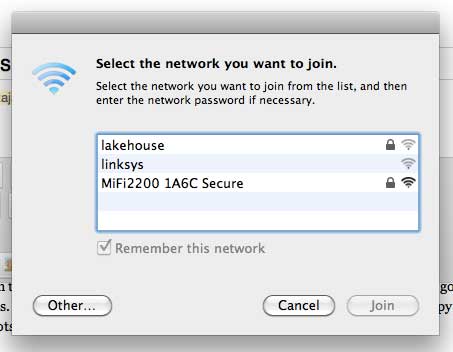
When you check your laptop, tablet or other WiFi device, you should see the MiFi listed in the available networks. When you choose it, you’ll be asked to type in a password.
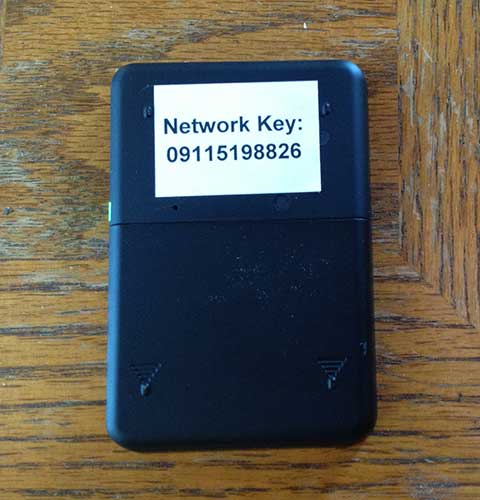
The password is conveniently printed on the back of the MiFi.
I tested the DajaJack with my iPad and Macbook Air. Both were easy to setup.
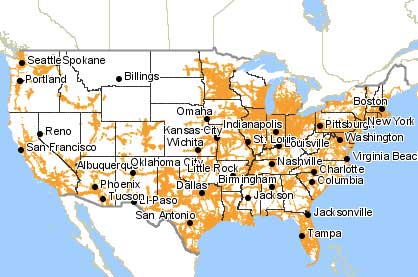
Hooking up the DataJack is the easy part. The hard part for me was finding a location where it worked well. The problem for me is that DataJack uses Sprint as their carrier. If you have spotty Sprint coverage in your location or a location where you’d like to use the DataJack, then your experience with it will not be a happy one. I tested the DataJack in Columbus, IN and it worked very well. Trying it at my house 12 miles away was another story because Sprint coverage doesn’t extend that far out. I brought the DataJack with me on my vacation to Saugatuck, Michigan and found the performance to be inconsistant. I’m actually using it right now as I’m typing this and it’s working pretty well for the moment.


A couple quick tests on Speedtest.net shows that it’s not exactly blazing fast. But for reading/responding to emails, some basic blogging, posting a few pics on Facebook and surfing, it works pretty well. However, watching videos on YouTube was pretty annoying due to a lot of starting and stopping. I wouldn’t want to use the DataJack as my primary broadband choice, but it’s a nice backup when a faster method is not available.
What I like best about the DataJack is that there are no commitments to use it. You don’t have to sign a 2 yr contract like with Verizon, Tmobile or AT&T’s MiFi solutions. DataJack doesn’t even do a credit check. You just buy the device; USB modem, MiFi 2200 or the router and then pay month to month depending on the plan you choose:
$9.99 – 200 MB Plan
$19.99 – 500 MB Plan
$29.99 – 1 GB Plan
$49.99 – 5 GB Plan
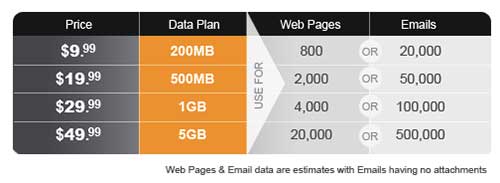
The 5GB plan price is on par with Verizon’s, TMobile and AT&T’s 5GB plans, which are $50. The advantage to going with one of the big boys is that their service covers 4G as well as 3G. DataJack is only 3G. Of course, they also make you commit to playing $50 a month for 2yrs and will charge you an early termination fee if you break the contract.
I was able to give the DataJack some real-world use the past few days when the cabin we rented for vacation did not have any internet access. Although Sprint coverage here isn’t the best, the DataJack has allowed me to do a little work and see how it performs with normal day-to-day tasks. I couple of times the connection failed, but all in all, as long as I used it for simple things, it worked fine. Battery life was pretty good too. I used it for several hours on one charge.
My Verizon iPad was a bit snappier, but that’s because Verizon coverage here is a little stronger. So my opinion of the DataJack is that it’s a worthy addition to your broadband toolbox IF you have good Sprint coverage AND you don’t already have a smartphone that can be turned into a mobile hotspot. For example, if you have an iPhone, you can turn on the mobile hotspot feature ($20 for 2GB/month on Verizon) and use it to provide broadband to your laptop.
I’d definitely go for either the DataJack or just use my existing smartphone before I’d buy another mobile hotspot device from Verizon, AT&T or TMobile and be locked into a 2yr agreement.
ESR for MagSafe Wallet with Stand, RFID Blocking with MagSafe Ring, 5 Card Holder for Phone Case, Slim Leather Magnetic Wallet for iPhone 17/16/15/14/13/12 Series(Not for Mini), Selected Samsung,Black
33% OffSUPCASE for MagSafe Wallet with Stand, Magnetic Wallet for Men, [Hold 5 Cards] [Adjustable Stand] [RFID Blocking] Phone Credit Card Holder Tripod for iPhone 17/16/15/14/13/12 Series, Black
16% OffProduct Information
| Price: | $89.99 |
| Manufacturer: | DataJack |
| Pros: |
|
| Cons: |
|

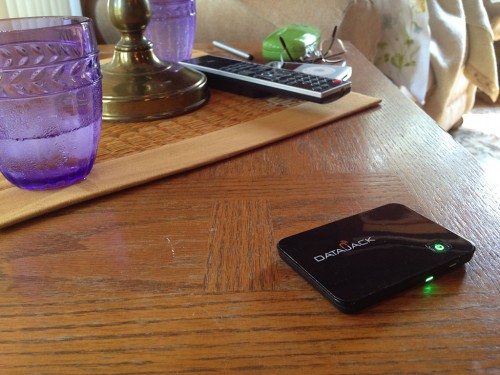

![[Strong Magnetic Lock]:Built-in magnets, offering a magnetic force of up to 3000g. Ensures the magnetic wallet fits tightly and attaches securely to the back of your iPhone. [Smart Card Storage]:The magnetic wallet is designed ingeniously to hold 5 c...](https://m.media-amazon.com/images/I/41i8zbilqXL._SL160_.jpg)
Gadgeteer Comment Policy - Please read before commenting
I have this same model MiFi 2200 with Virgin Mobile, which is also using the Sprint network, and have the same issues with spotty coverage – note that if you are looking at a coverage map that under these plans you do NOT get “roaming coverage”, which is why it has less coverage than a Sprint phone. Also, if you purchase the Virgin branded MiFi from Walmart you are eligible for a special rate of 1GB for $20/mo (double the non-Walmart plans).
@Betty Thanks for the info!
I had this same model MiFi 2200 with Verizon, and used it heavily on Caltrain (the San Francisco Bay Area’s commuter train) for 2-3 years. Its connection was definitely spotty—I agree with the review that it was useable for e-mail and basic surfing, but video was right out, and interactive sessions (like SSH for developers or network operations folks) were quite painfully slow.
The other thing to know about the MiFi 2200 is that the WiFi chip on it is terrible. My unit would overheat if more than one computer was connected, resulting in random drop-outs. The unit worked a lot better if you plugged it in via USB to a single computer, and used that computer’s Internet sharing feature.
You can now get an LTE (“4G”) MiFi for a similar price, and they offer contract-free data plans. I’m using Verizon LTE on an iPad (using the Mobile Hotspot feature) now on the Caltrain, and the difference is night and day—I can watch video, and SSH connection lag is reasonable/tolerable. Not sure if they fixed the WiFi overheating issue, which I also don’t have on the iPad.
Datajack total rip off. Told you could return, now saying we used 200 mb ; saying I should have read the fine print. I was specifically told with no qualifications ,you can return. $90 lesson in dealing with sleazeball company !
@Kyle Did you use it at all?
I’ve had the same Mifi 2200 model for a month now, and I find it to be an awesome product for the price. For $9.99 a month and no contract, I have a backup hotspot I can use for travel, at the park, etc. I would not want to rely on it as my only source of Internet, but it’s great as a convenient, low-cost backup. It definitely adds value to the wifi-only iPad, and makes traveling with one much more convenient.
I had to call the help line with a question when I activated it, and I found them to be courteous and extremely helpful.
As mentioned above, the biggest downside is the coverage, but so far I’ve found it to be adequate. I took a trip a couple of weekends ago through Virginia and I had coverage just about everywhere I drove, but depending on where you live this could be an issue.
@Kyle, it clearly states on the return policy, over 100MB of usage, that you would not qualify for the refund.
We use the mifi for our only internet broadband service. We located a generic power chord, then if we locate it out a window we get 4 bars, which for our location in the middle of two towers with no hope of closer tower is the best we can do. It does randomly turn itself off. Is that due to overheating?
@Linda That’s probably what is happening, but I can’t be sure. Have you contacted DataJack to ask about that issue?
I paid $30 for the Virgin Mobile mifi 2200 and use the $35 prepaid 2GB. It is much cheaper than Datajack.
I can flash the mifi 2200 to verizon prepaid $15 a month unlimited data